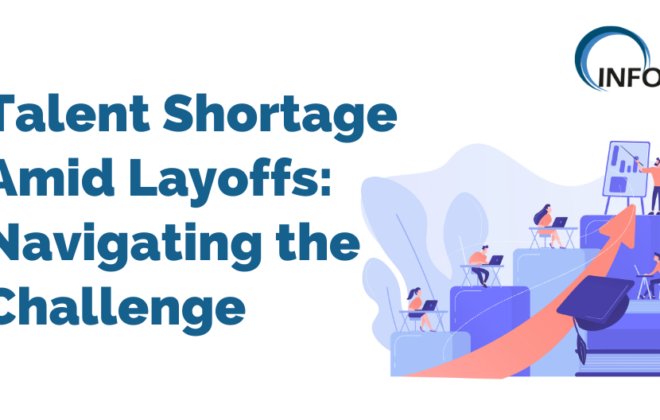Total Talent Management: What’s the Hype All About?
Talent industry experienced a massive transformation after the pandemic. Many companies tested the waters with contingent workers and eventually adopted this new model. The U.S Independent Report 2020 released by Upwork, also suggests that there has been a massive upsurge in the independent labor economy in the last year.
- Freelancing contributed nearly $1.2 trillion to the economy. It remains a significant part of the economy and an important component for adapting to difficult economic times.
- Amid a tough job market for recent college graduates, half of the Gen Z workforce (age 18-22) has freelanced in the past year, and of those, more than a third (36%) started since the onset of Covid-19.
![]()
Amid this rise, smooth management of the contingent workforce has emerged as a challenge for companies. Fewer than 30% believe they can efficiently manage freelancers. Companies are looking for better management alternatives that ease their already tight workforce situation.
Total Talent Management here makes a statement by providing organizations with an enterprise-wide talent solution that offers an agile and 360-degree approach to managing the workforce.
Total Talent Management (TTM)
At present, the procurement department oversees the complete contingent workforce and HR regulates the permanent workforce. Bizarrely, these two operate in a siloed structure and therefore do not interfere in each other’s work.
Total talent management model breaks these silos and taps on the comprehensive power of the talent. It encompasses a comprehensive approach to sourcing talent by combining permanent, temporary, freelancers, contractors, SOW workers, part-timers under a single ambit.
In place of compartmentalizing the resources, the TTM model follows a flexible allocation of resources across the projects. It analyzes the most suitable workforce structure amongst the available permanent and temporary talent options. Factors including spend, resource utilization, skills, and compliance are considered while finalizing the allocation.
With TTM, the goal is to add agility to the process. And source the right kind of talent at the right time.
Benefits of TTM Model
1. Quick Talent Placement
40% of employers globally are having difficulty filling positions. And with the expanding demand and supply talent gap and slow talent sourcing methods, getting hold of the right talent has become further demanding.
The TTM model addresses this slow talent hiring process by presenting a broader range of staffing options such as contingent workforce, SoW workers, payroll workers, or more.
In place of sticking to one hiring methodology to fill a vacant position, companies can pick from the list that best aligns with the project timelines and talent needs. This approach takes into consideration a lot of factors before employing resources such as cost, length of the project, resource availability, project deadlines, and more.
Besides, TTM provides the leaders with a bird’s eye view of the organization-wide resource allocation. This means companies can relocate the resources internally in place of scrounging for it externally every time the demand arises.
2. Cost-saving
By strategically deploying and re-deploying talent through a variety of projects, you can cut down the talent search and deployment cost dramatically.
Moreover, TTM vendors offer a complete talent solution that encompasses temporary and permanent workforce needs. You no longer have to invest in multiple vendors for your varied talent requirements.
Here, a single vendor can manage both the staffing aspects without doubling your cost or effort.
The best part of this approach is that it tries to strike an ideal balance between, skill and cost keeping talent quality paramount. Research shows that 69% of human capital leaders are planning to adopt a total talent approach as a way to better control their labor costs.
![]()
3. Improved Talent Visibility
Because of siloed talent processes, getting visibility into the complete workforce is not easy. Leaders have a tough time understanding and integrating data from all the departments. Making it way more difficult to acquire the complete picture and polish workforce strategies.
The TTM model addresses this issue aptly. To allocate the resources wisely among the organization, leaders need to have constant access to the workforce arrangement. And for this reason, TTM equips users with an analytics platform that consistently displays the current workforce composition.
With visibility into the labor data, workforce constitution, and resource requirement, leaders can improve their workforce productivity and gain a comprehensive view of the scattered workforce.
![]()
Hurdles with Total Talent Approach
While talks around the total talent management approach have started to gain pace, fewer companies have started acting on these lines. Going by Manpower Group research, just 27% of respondents have taken firm steps towards achieving Total Talent Management, where 16% are still at the researching stage.
Majority of the HRs don’t deny the importance of total talent management, but researches have shown that factors like below have been a hurdle in the road to total talent management adoption.
- Other priority talent management issues
- Leadership support
- Restricted Budget
- Lack of technology
- Lack of internal resources
Road Ahead
Implementing this solution demands management efforts and commitment to progress. Even as you continue to take steps in this direction, there will be hurdles to pull you back. In such a situation, you must
- Assess current talent acquisition process and shortcoming
- Consider the inability to react to dynamic workforce challenges
- Impact your current workforce constitution has on productivity
- Evaluate complete talent acquisition cost
Conclusion
Road to total talent management is a promising journey that is sure to steer your workplace in the direction of flexibility, productivity, and profitability. Not only that, but it is also the future of talent management that draws on technology, and innovation. It is high time that you start holding conversations around the total talent approach and concentrate on the skills and instead of the worker type.
Related Posts
Subscribe For Updates
Categories
- Accountant
- AI
- Automation
- Awards and Recognitions
- Blue Collar Staffing
- Burnouts
- Campus Recruiting
- Cloud
- Co-Ops agreements
- Company Culture
- Compliance
- contingent workforce
- Contingent Workforce
- COVID-19
- Cyber Security Staffing
- Data Strategy
- Digital Transformation
- direct sourcing
- Distributed Workforce
- Diversity
- Diversity & Inclusion
- Economy
- Events & Conferences
- fleet industry
- Gig Economy
- Girls in Tech
- Global Talent Research and Staffing
- Government
- Healthcare
- Healthcare Staffing
- Hiring Process
- Hiring Trends
- Home Helathcare
- HR
- HR Practices
- HR Tech
- IT
- Labor Shortages
- Life Science
- Local Governments
- News
- Nursing
- Payroll Staffing
- Public Sectors
- Recruiting
- Remote Work
- Skill Gap
- SMB Hiring
- Snowflake
- Staffing
- Staffing Augmentation
- Staffing Challenges
- Talent ROI
- Tech Staffing
- Technology
- Tips & tricks
- Total Talent Management
- UI/UX Design
- Uncategorized
- Veteran Staffing
- Veterans Hiring
- Veterans Hiring
- Workforce Management
Recent Posts
- Automation in Recruiting: From Chatbots to Predictive Screening
- Gig Economy Expansion: The Impact on Talent Pools and Business Models
- Skills-Based Hiring: Why Credentials Alone Don’t Cut It in 2025
- Procurement 3.0: AI & Intelligent Automation in 2025
- Q3 Is Here: Is Your Contingent Workforce Strategy Falling Behind?
Newsletter
Archive
- September 2025
- August 2025
- June 2025
- April 2025
- March 2025
- December 2024
- November 2024
- October 2024
- September 2024
- August 2024
- July 2024
- June 2024
- May 2024
- April 2024
- March 2024
- February 2024
- January 2024
- December 2023
- November 2023
- October 2023
- September 2023
- August 2023
- July 2023
- June 2023
- May 2023
- April 2023
- March 2023
- February 2023
- December 2022
- November 2022
- October 2022
- September 2022
- August 2022
- July 2022
- June 2022
- November 2021
- October 2021
- September 2021
- August 2021
- July 2021
- June 2021
- May 2021
- April 2021
- March 2021
- February 2021
- January 2021
- December 2020
- November 2020
- October 2020
- September 2020
- August 2020
- July 2020
- June 2020
- May 2020
- April 2020
- March 2020
- February 2020
- January 2020
- December 2019
- November 2019
- October 2019
- September 2019
- August 2019
- July 2019
- June 2019
- May 2019
- January 2019
- December 2018
- November 2018
- October 2018
- September 2018
- August 2018
- July 2018
- June 2018
- May 2018
- April 2018
- March 2018
- February 2018
- January 2018
- December 2017
- November 2017
- October 2017
- September 2017
- August 2017
- July 2017
- June 2017
- May 2017
- November 2016
- October 2016




